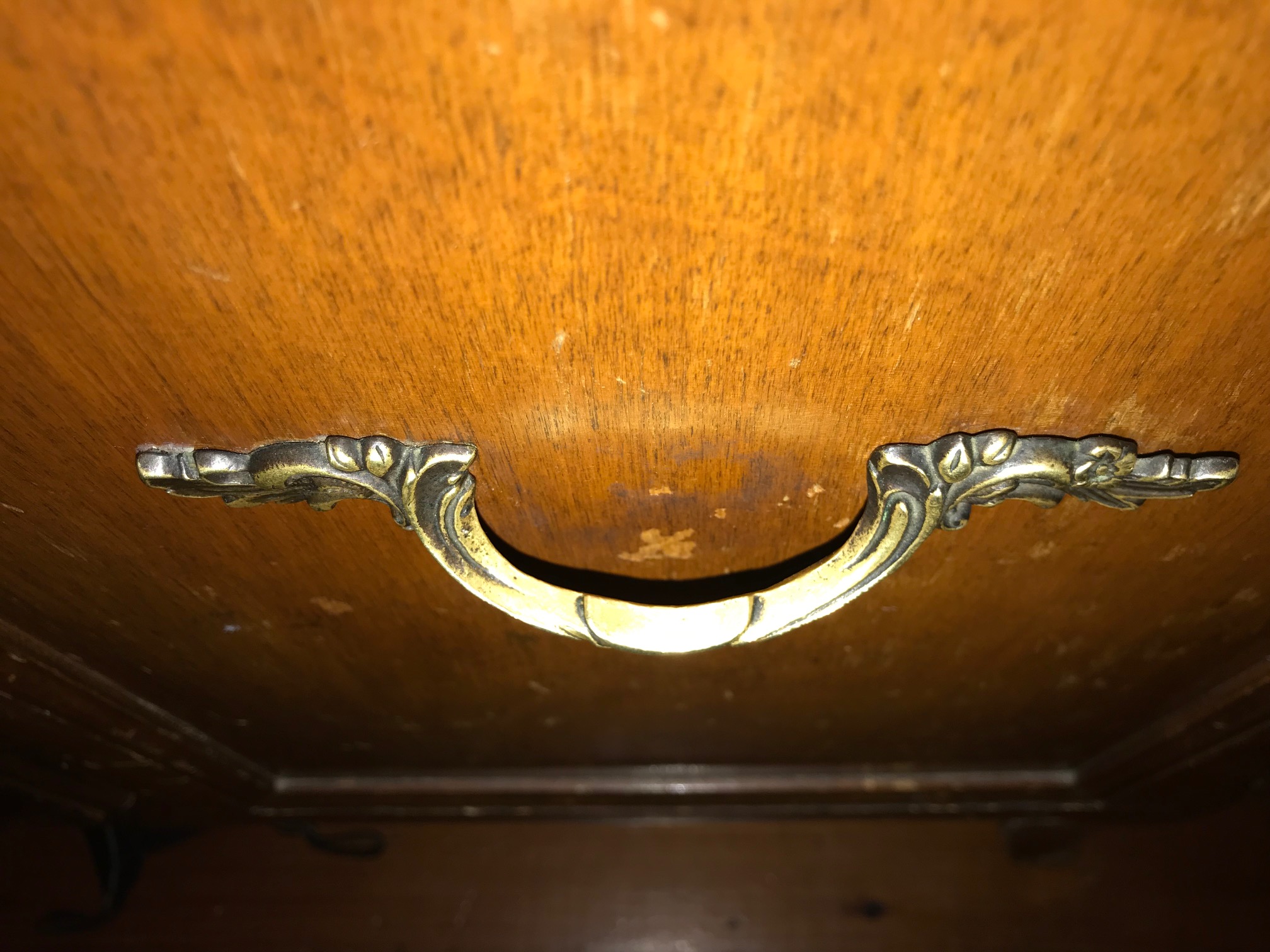1940 Drawer Pull From Dining Room Sideboard: 8,681 ppm Lead

These drawer pulls are from the dining set my grandparents got for their home when they were married in 1940 in San Francisco.
When tested with an XRF instrument they had the following readings:
- Lead (Pb): 8,681 +/- 643 ppm
- Cadmium (Cd): Non-Detect / Negative
- Arsenic (As): Non-Detect / Negative
- Mercury (Hg): Non-Detect / Negative
- Barium (Ba): Non-Detect / Negative
- Selenium (Se): Non-Detect / Negative
- Chromium (Cr): Non-Detect / Negative
- Antimony (Sb): 447 +/- 171 ppm
- Tin (Sn): 3,090 +/- 254 ppm
- Zinc (Zn): 293,100 +/- 2,700 ppm
- Copper (Cu): 688,700 +/- 3,600 ppm
- Iron (Fe): 1,636 +/- 303 ppm
I would expect any brass drawer pulls of the era to have similar readings for Lead.
Leaded brass items like this may or may not test positive with a LeadCheck swab*, the swabs were not really designed to test for lead in brass like this. So even if a LeadCheck swab looks “negative” your brass may still be positive for high levels of lead. You can usually tell by the color. Looking through my posts of different types of leaded brass items (link below) should give you a good sense of the concern and different examples.
To read more about leaded brass, Click HERE.
Thank you for reading and for sharing my posts. Please let me know if you have any questions.
Tamara Rubin
#LeadSafeMama
*Amazon links are affiliate links. If you purchase something after clicking on one of my links I may receive a small percentage of what you spend at no extra cost to you. Thank you for supporting my advocacy work in this way.
Photos below are with and without flash to help show detail and texture.





Never Miss an Important Article Again!
Join our Email List




Tamara, do you think its the paint on it, or the metal itself?
In this case I think it is the metal.
stuff like this is so disappointing! because it seems likely that so many other ‘antiques’ – such as benign looking lamps, etc, are also full of lead.
Hello! Does the lead in the drawer pulls come off on hands, or is it embedded in the metal? Sorry, very new to this and don’t really understand how it all works. Also, how about the wood around the drawer pulls? We have many 1940s and later wooden pieces that are not painted but are stained/varnished or veneer. Is there often a concern for lead in these items? Thank you for all of your work and research!
I wonder if you know anything about the drawer pulls for the girls’ French provincial furniture from the 60s-70s? We tested the paint before I brought it into my baby’s room but I didn’t even think about the pulls containing lead. It has never been refinished or anything.
My drawer pulls, newer but similar to yours, test red w/Scitus swabs. Since lead-free replacements with the exact spread b/w screw holes will be impossible to find, what’s your best recommendation? I’m trying to think of an attractive way to cover or wrap the handles that won’t look tacky. This is expensive Drexel Heritage Heirloom mahogany furniture, & I suspect that the handles give me low-level consistent lead exposure.